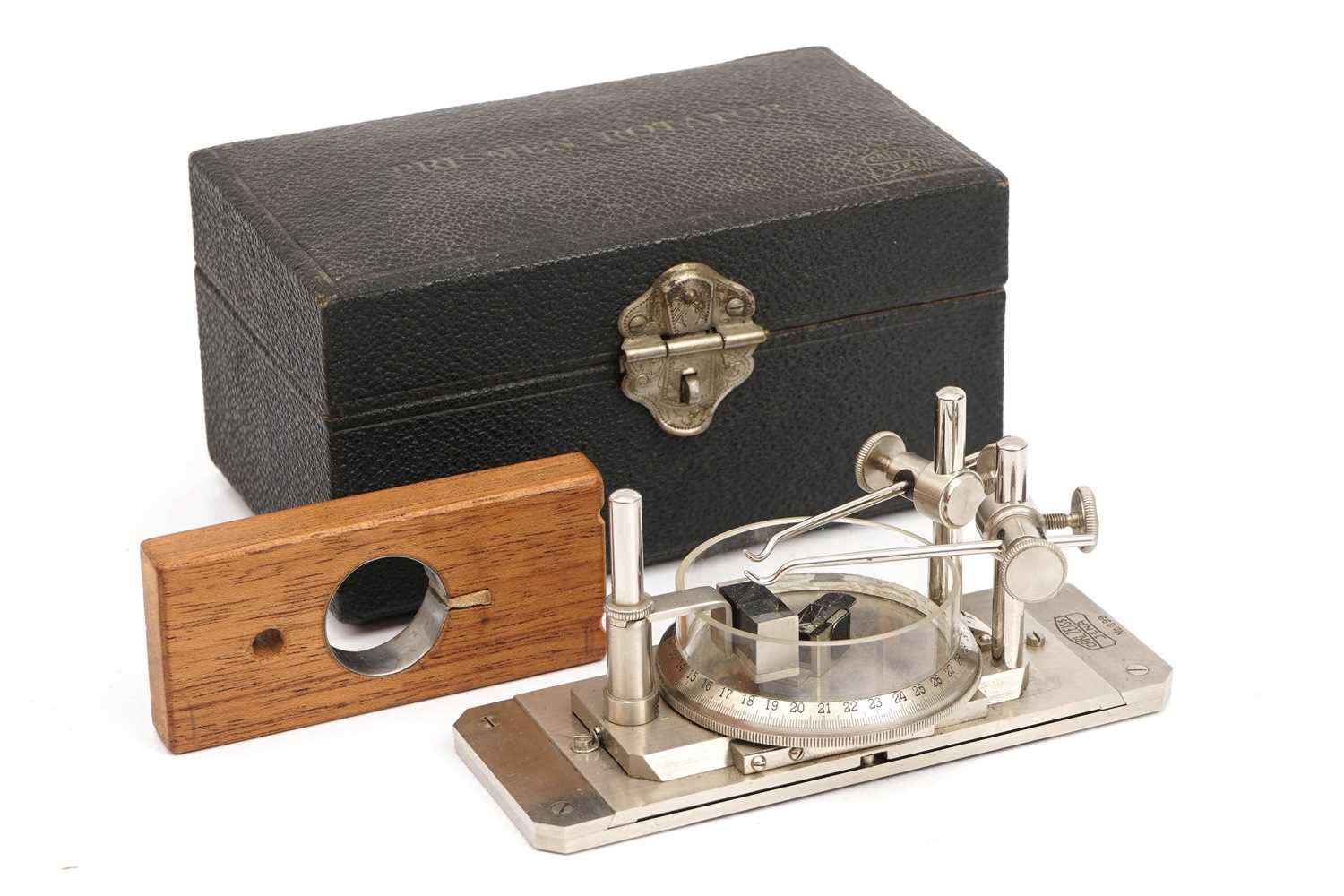26th Apr, 2019 12:00
Fine Photographica & Instruments of Science & Medicine
A Zeiss 'PRISMEN-ROTATOR' Microscope Accessory
German, c.1890, signed 'CARL ZEISS JENA no. 299', in original faux leather covered wooden case, constructed of nickel plated brass with engraved scale to rotator; This is the rare 'Double Prism Rotator' which incorporated a second prism to correct odd numbers of reflections, it appears in the Zeiss 1898 catalogue and cost an extra 18 marks more than the standard Prism Rotator, the description in the 1898 catalogue reads 'This apparatus is adapted for viewing from all sides, at low magnifications, large objects, in air or water, illuminated by incident light, without necessitating any alteration in the position of the object with respect to its support.
This accessory will, accordingly, be found particularly useful for the examination from all sides of such objects as are too delicate or precious to admit of any preparation. By means of a rotating base and multiple reflections at silvered prism surfaces the object is optically placed in such a position that it may be examined from above or below, or any other point.'
Sold for £2,640
Result plus buyers premium
German, c.1890, signed 'CARL ZEISS JENA no. 299', in original faux leather covered wooden case, constructed of nickel plated brass with engraved scale to rotator; This is the rare 'Double Prism Rotator' which incorporated a second prism to correct odd numbers of reflections, it appears in the Zeiss 1898 catalogue and cost an extra 18 marks more than the standard Prism Rotator, the description in the 1898 catalogue reads 'This apparatus is adapted for viewing from all sides, at low magnifications, large objects, in air or water, illuminated by incident light, without necessitating any alteration in the position of the object with respect to its support.
This accessory will, accordingly, be found particularly useful for the examination from all sides of such objects as are too delicate or precious to admit of any preparation. By means of a rotating base and multiple reflections at silvered prism surfaces the object is optically placed in such a position that it may be examined from above or below, or any other point.'
Auction: Fine Photographica & Instruments of Science & Medicine, 26th Apr, 2019
